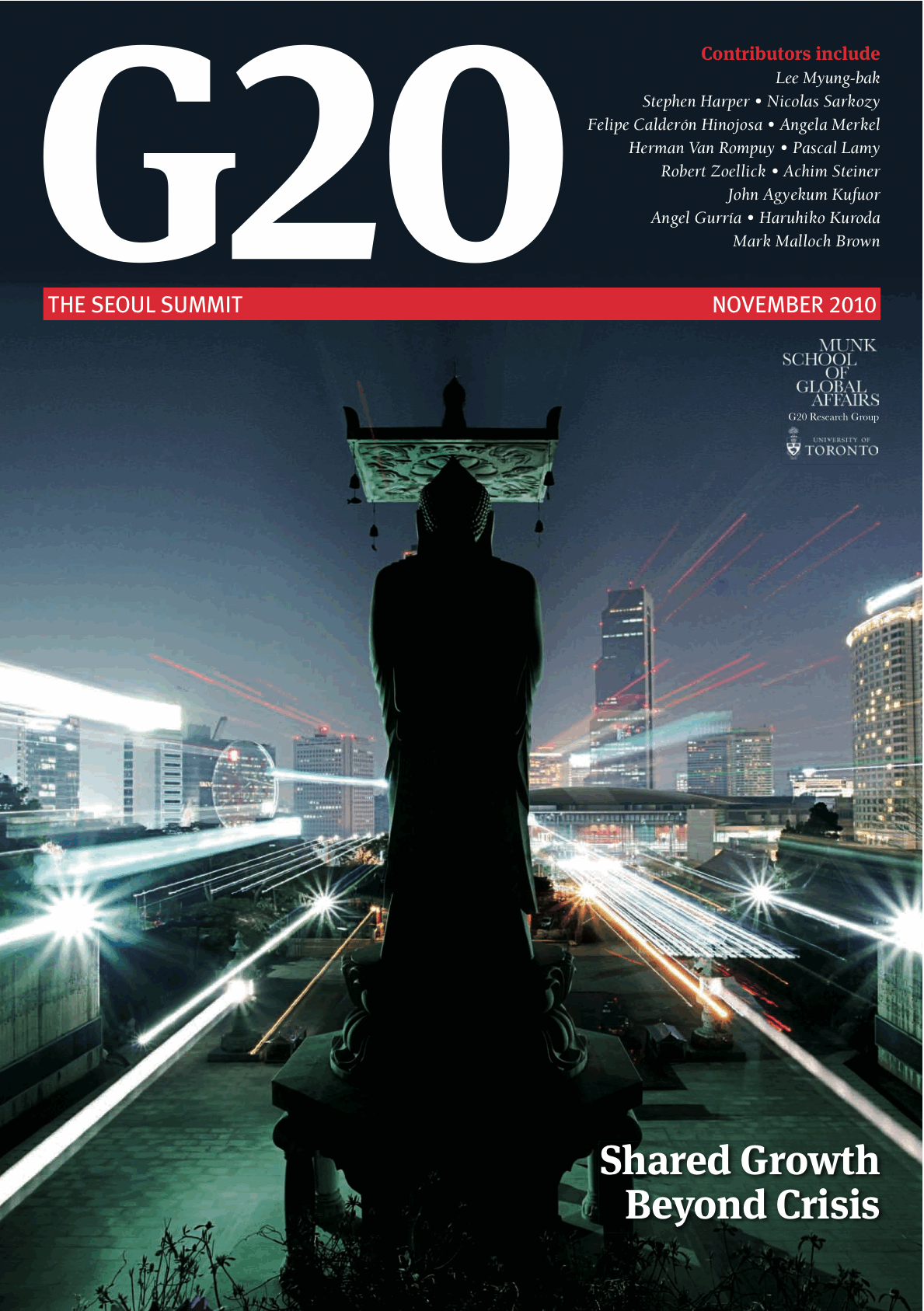
Global Governance Program
Including the G7 Research Group, G20 Research Group,
BRICS Research Group and the Global Health Diplomacy Program

 |
Global Governance Program |
 |

APEC’s contribution to economic recovery
By Muhamad Noor, executive director, APEC Secretariat
APEC members in Asia are leading the global economic recovery. Under the stewardship of Japan as host in 2010, APEC is focusing on five attributes of growth: balance, inclusiveness, sustainability, innovativeness and security
To download a low-resolution pdf, click here. (Be patient! It's 50 MB.)
The Asia-Pacific Economic Cooperation (APEC) forum includes the world’s most dynamic economies, with nine of its members also being members of the G20. In the past decade and a half, APEC members have contributed more than 60 per cent of the world’s total economic growth; they currently represent 40 per cent of the world population, 43 per cent of global trade and 53 per cent of world gross domestic product (GDP).
APEC’s members in Asia are leading the recovery from the global economic crisis. Asia’s strong rebound, supported by increases in exports and private domestic demand, continued in the first half of 2010, despite renewed tension in global financial markets. The International Monetary Fund (IMF) now projects that Asia’s GDP growth in 2010 will be about 7.5 per cent and that it will lead global economic growth.
As the world’s growth engine, the Asia-Pacific region therefore bears a responsibility for the future course of the global economy.
APEC is doing several key things to contribute to the strength of its members. Since it was founded in 1989, APEC has made achieving regional prosperity through free and open trade and investment its primary goal. APEC’s efforts to date have contributed to a reduction in members’ average tariffs from 17 per cent in 1989 to 6.6 per cent in 2008. Work in the area continues with an expanded trade and investment agenda aimed at further accelerating regional economic integration.
APEC also places paramount importance on the effective functioning of the multilateral trading system. A strengthened international system is the best source of economic growth, development and stability. Because further reform and liberalisation of trade policies will bolster economic recovery, APEC seeks an ambitious, balanced and prompt conclusion to the World Trade Organization’s Doha Development Agenda.
In 2010, APEC ministers responsible for trade extended APEC’s standstill on protectionism — a commitment originally made by APEC leaders in 2008 in response to the global economic crisis — until 2011 (and beyond if necessary). APEC’s commitment, together with the G20’s similar undertaking, has helped contain protectionism. This has underpinned the global economic recovery.
The Asia-Pacific region has become the world’s growth centre by promoting free and open trade and investment and by strengthening regional economic integration. However, as APEC leaders recognised in 2009, the region needs to develop a new growth paradigm to cope with the changed post-crisis landscape. APEC cannot, the leaders instructed, go back to ‘growth as usual’. Accordingly, over the course of 2010, APEC is developing a new growth strategy that takes into account current challenges to long-term prosperity such as environmental imperatives and disparities in economic status.
Under the stewardship of Japan as host of APEC in 2010, the strategy is focusing on five particular attributes of growth: balance, inclusiveness, sustainability, innovativeness and security. These five attributes are intended as guidance for APEC economies on how to pursue high-quality growth.
This strategy also contributes to the global economic recovery and the agenda that APEC shares with the G20. APEC has, in fact, made support of the G20’s Framework for Strong, Sustainable and Balanced Growth an express priority. With nine of its members also participating in the G20, APEC plays an important role in dovetailing regional and global actions.
APEC’s growth strategy will be put to the leaders when they gather for their annual meeting in Yokohama, Japan, on 13-14 November 2010 immediately following the G20’s Seoul Summit.
While the G20’s objectives to achieve a strong, sustainable and balanced global economy and a stable and secure international financial system differ from APEC’s focus on trade and investment, and although APEC does not deal with macroeconomic, financial and monetary policy, the two do have a synergistic relationship. APEC has a 20-year history of getting things done regionally through its multilayered and action-oriented institutional infrastructure (including the levels of leaders, ministers, senior officials and working groups). In addition, APEC has a strong track record in delivering effective capacity-building projects, in particular for its developing members. APEC therefore complements the G20 by translating shared policies and strategies for growth into local action.
The proximity of the G20 summit in Seoul and the APEC Economic Leaders’ Meeting in Yokohama will further enhance the complementarity of the two bodies.
|
This Information System is provided by the University of Toronto Library |
All contents copyright © 2025. University of Toronto unless otherwise stated. All rights reserved.